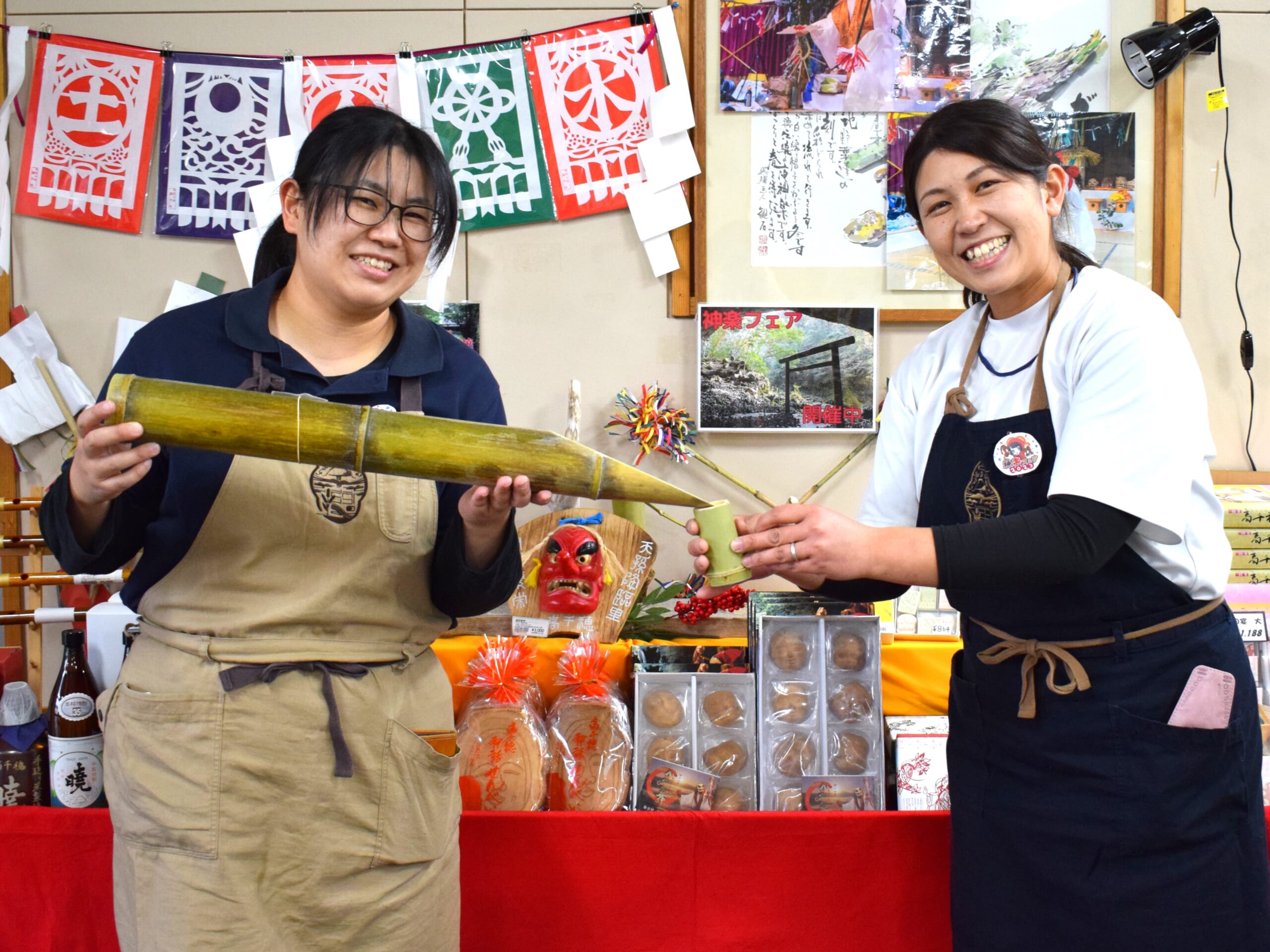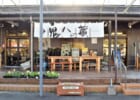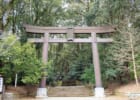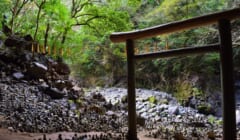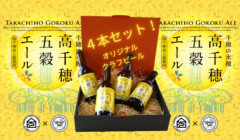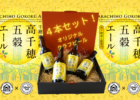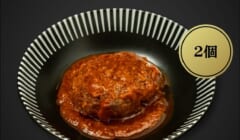
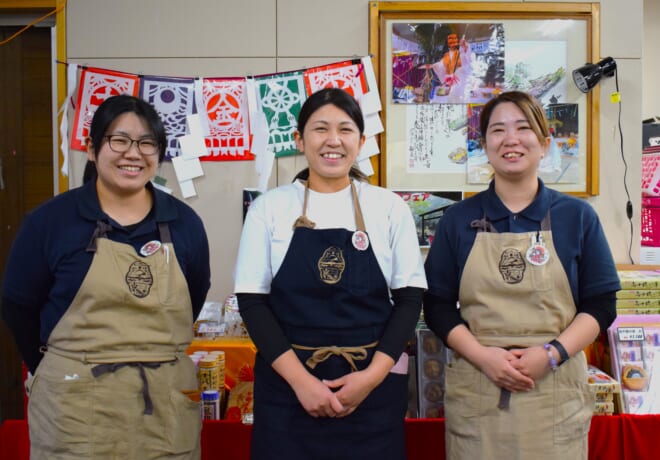
The Kagura fair, pray and dance for a bountiful harvest!
- 0 お気に入り
- 1267 view
- お気に入り登録

When the rice harvest season is over and the fields are covered with frost, Takachiho welcomes the kagura season.
At the Takachiho Gamadase Market Kihachi-no-Kura, the staff have carefully selected a range of products related to Takachiho kagura. With these selected products a “Kagura Fair” is currently being held!
To show appreciation for the autumn harvest and praying for a bountiful harvest in the upcoming year, the Takachiho Kagura consist of 33 kagura dances presented as an offering to the gods.
Appointed as a Important Intangible Folk Culture Property of Japan, this Shinto ritual has been inherited down generation after generation since the Heian period (794 – 1185). It now takes place at 19 different sites in Takachiho town from the middle of November until February every year.
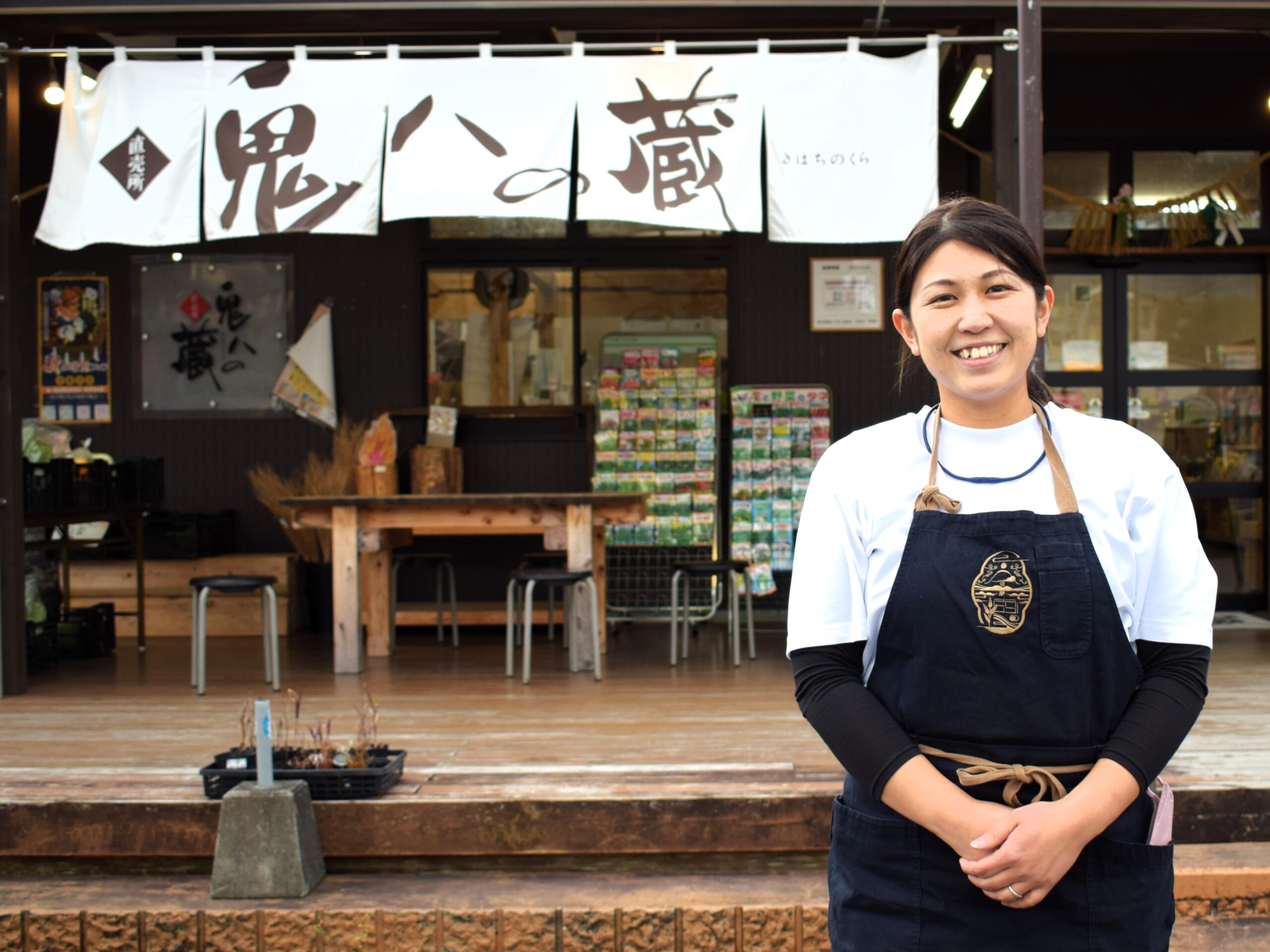
Takachiho Gamadase Market Kihachi-no-Kura is located in the centre of Takachiho town and serves as a local direct-sales shop for local producers. From fresh crops to locally made products, this shop is known for being loved by the locals.
★Click here directions to Kihachi no Kura!
“For this year’s Kagura Fair, we have collected products related to the Takachiho Kagura”, says shop manager Uchikura Azumi.
The Kagura Fair is scheduled from November 22nd, the same date as when this year’s night Kagura (known as Yokagura) began, until mid-January.
From all the products available at the fair, we asked the staff to introduce their favorites.
Treat yourself to “Kappo-zake”, a bamboo drinking set that will warm the body at night kagura.
The staff unanimously recommend the bamboo drinking set used for “kappo-zake”, which is often served for night kagura.

“Kappo-zake” is made by pouring sake into a green bamboo tube and heating it over an open hearth or bonfire. The name comes from the “kapo kapo” sound made when the sake is being poured.
It is recommended for filling it with sake and then enjoying the hot sake, as well as an interior decoration.
It is truly one of the traditional local delicacies of Takachiho!
The Kagura flute that colors the dance and echoes in the night.
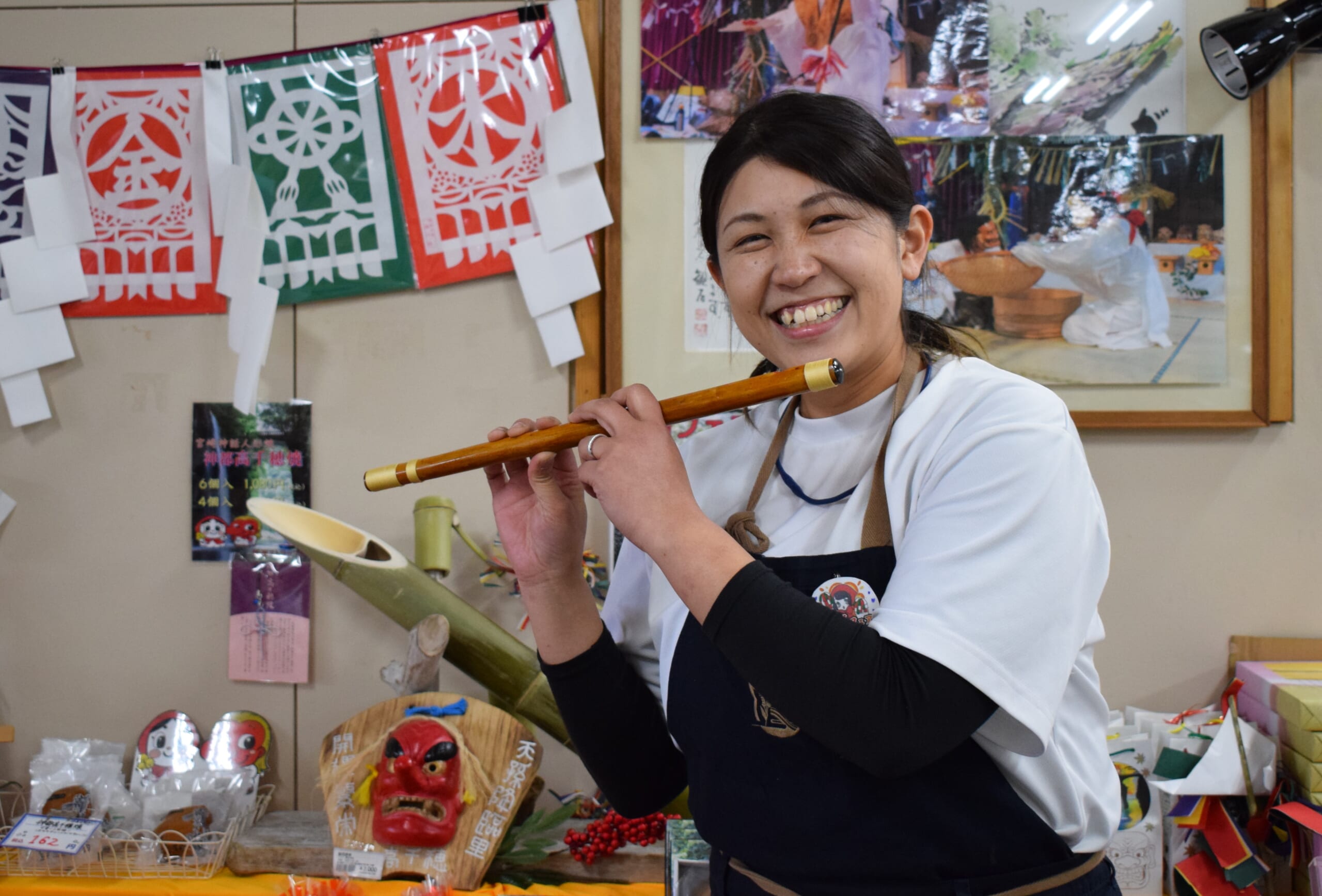
“There is also a kagura flute, that plays the music for the kagura!” says Uchikura.

The Kagura flute, made of thin bamboo with holes drilled in it, is a traditional culture instrument of Takachiho. Each flute is handmade and has a different color and shape.
Enjoy the unique sound of the kagura flute♬
The taste of night kagura, the Kagura nabe, inspired by Kagura udon.
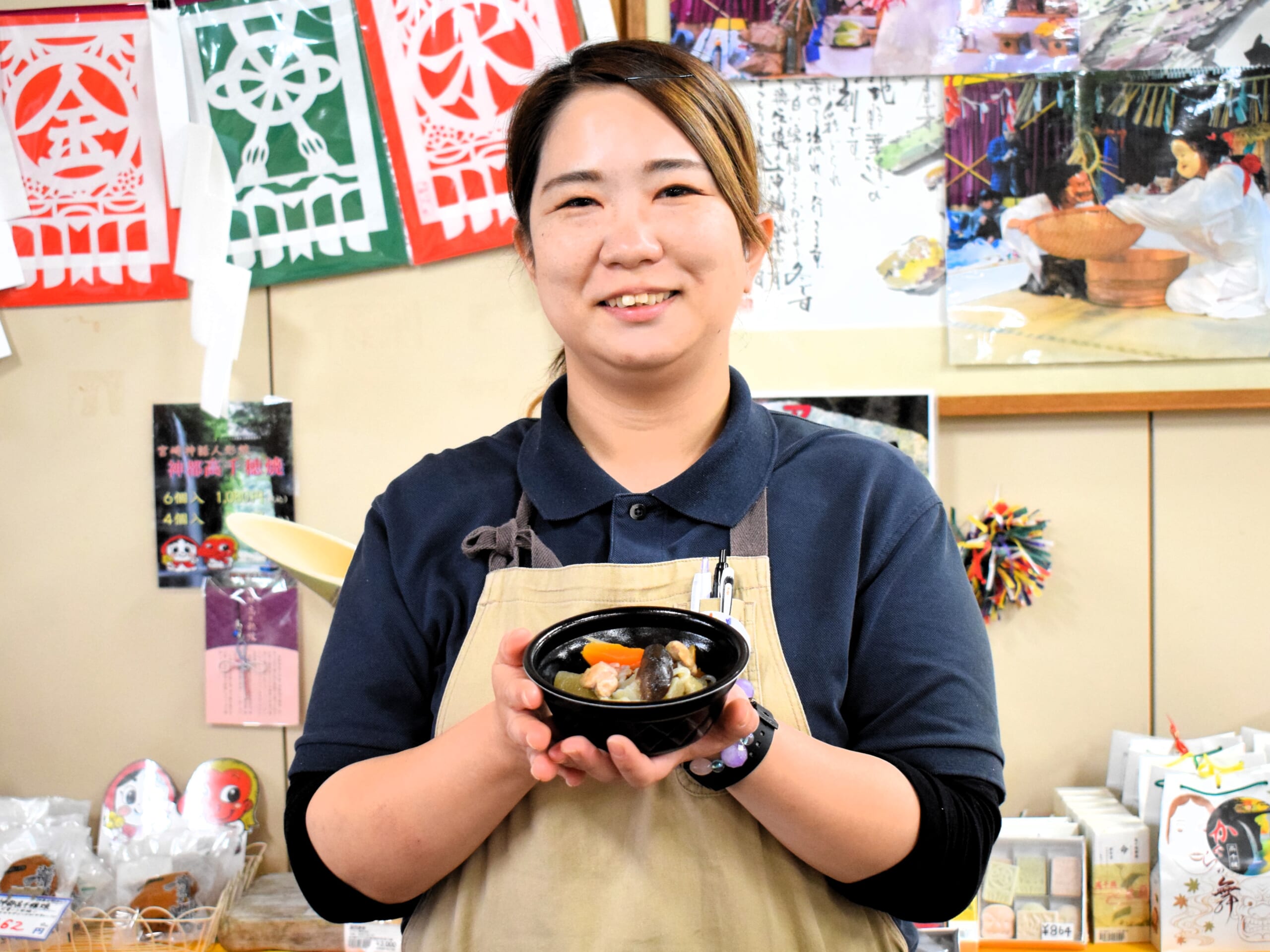
Staff member Minato recommends the Kagura nabe, which is inspired by the Kagura udon served at night kagura performances.

Kagura nabe, located in the Kihachi-no-Kura side dish section, is made with the same ingredients and flavor of Kagura udon noodles, but with thread konnyaku instead of udon noodles.
Enjoy a warm hot pot, freshly handmade in the shop every day.
The sake served at night kagura is locally made in Takachiho.
The shop manager Uchikura says she loves sake.
She introduced the shochu, sake made from rice, locally in Takachiho Town. This sake is one of the delights of night kagura.

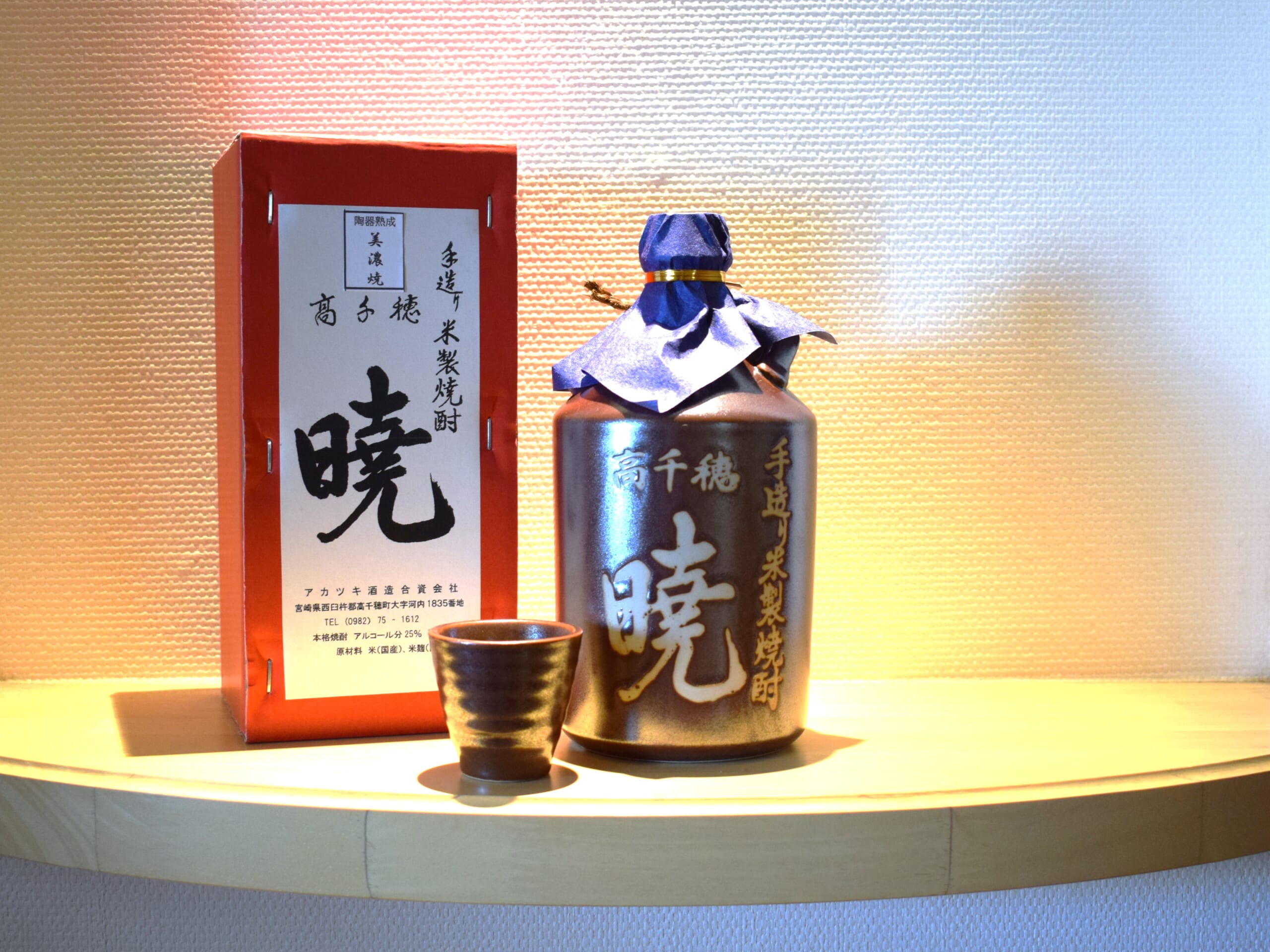
The first is Akatsuki (暁), a authentic rice shochu produced by Akatsuki Distillery (アカツキ酒造).
It is characterized by a peculiar richness due to a change of pressure during distillation, giving it a slightly sweet aroma and a dignified, mellow and rich taste.
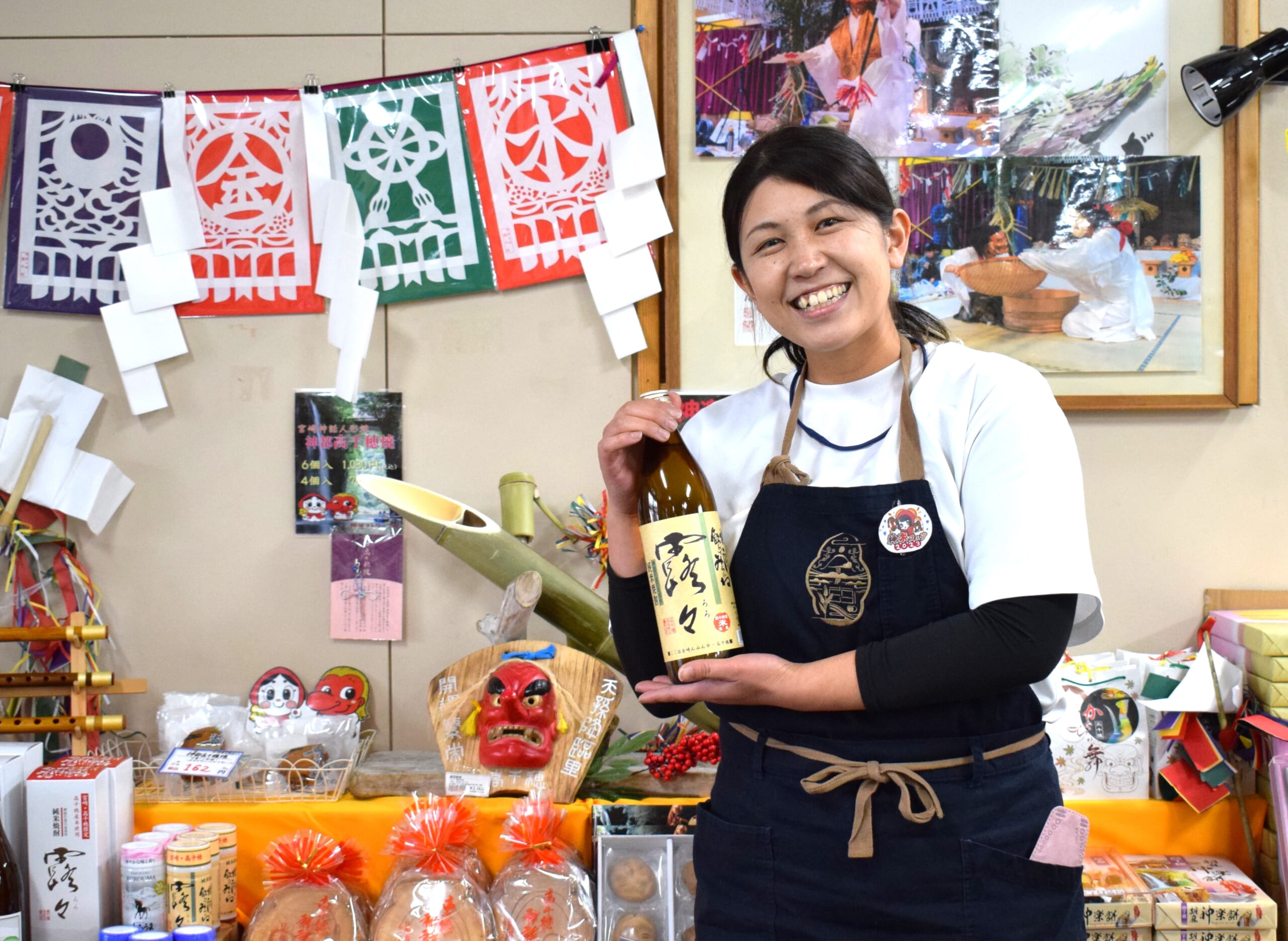

The second is Roro (露々), produced by Takachiho Distillery (高千穂酒造).
It is sold only in Miyazaki Prefecture! With an alcohol content of 20 percent, it is easy to drink and popular with tourists and women.
Recommended as souvenirs! Five sweets with a kagura motif.
There are many sweets with the motif of Takachiho kagura. We asked staff members Minato and Tomitaka to introduce some of the products they recommend.


Shinto Takachihoyaki (神都高千穂焼), a kagura motif cake recommended by Tomitaka. The sweet bean paste encapsulated in the fluffy dough is delicious ♡.
Saruta-kun and Uzume-chan, whose motif is of Sarutahiko-no-Mikoto and Amenouzume-no-Mikoto are also recommended for their cuteness.

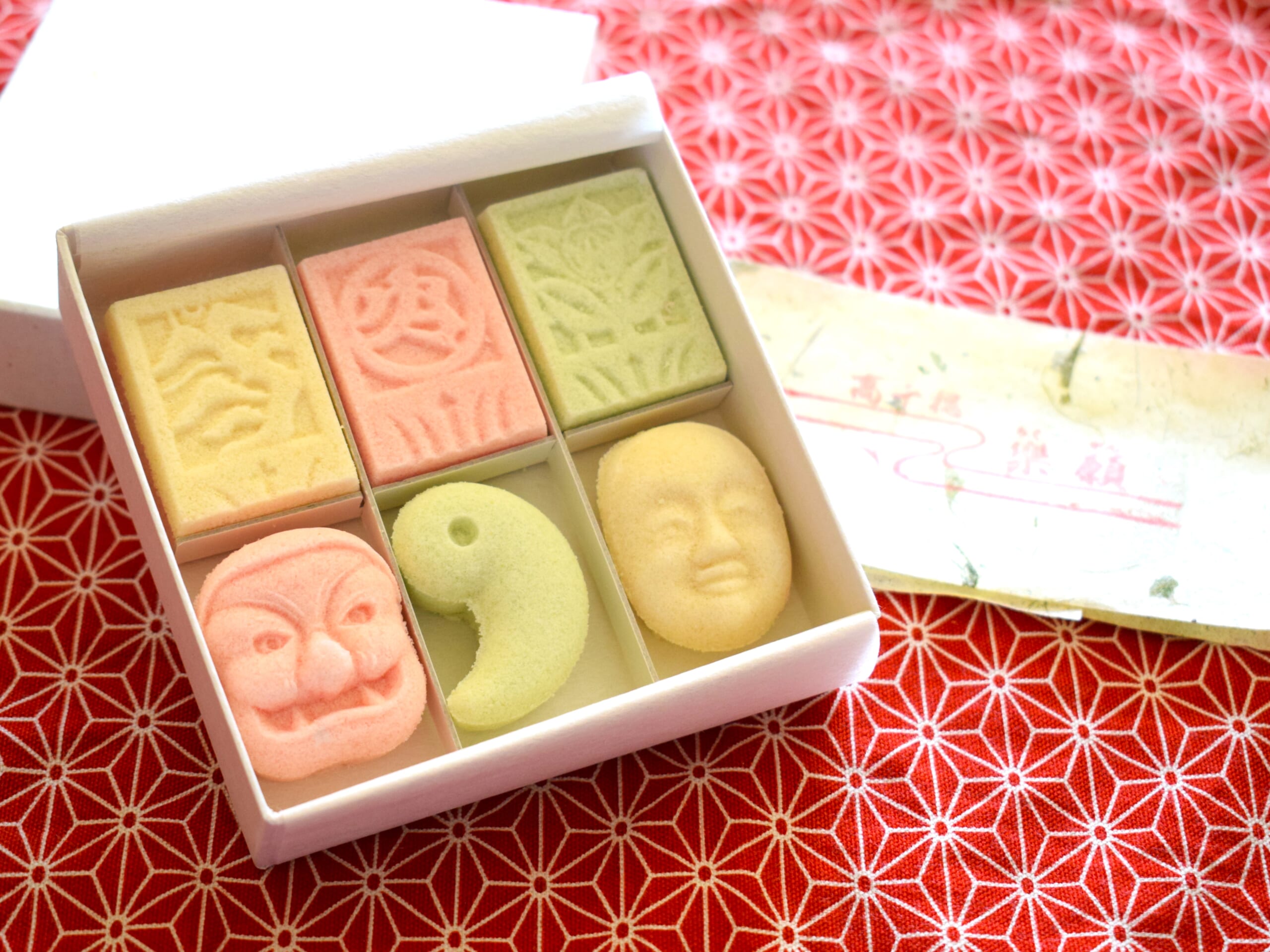
“The Japanese sweet called Rakugan, normally written with the kanjis 落雁, is here written as “Rakugan Mikoto” (楽願 命). The name reads “Rakugan” as in “Wish for joy”, which makes it very interesting!” says Tomitaka.
They are available in the shape of Amenotajikarao-no-Mikoto(手力雄命), Amanouzume-no-mikoto (天鈿女命), Magatama (勾玉) and the carved figures from the Takachiho Kagura performance (えりもの).


Tomitaka is holding a Shinwa senbei – mythological rice cracker (神話せんべい). The size of a rice crackers makes it look like you could but it over your face like a kagura mask.
The rice crackers comes in 2 different shapes, Amenotajikarao-no-Mikoto(手力雄命) and Amanouzume-no-Mikoto (天鈿女命). Wouldn’t you like to try it on?
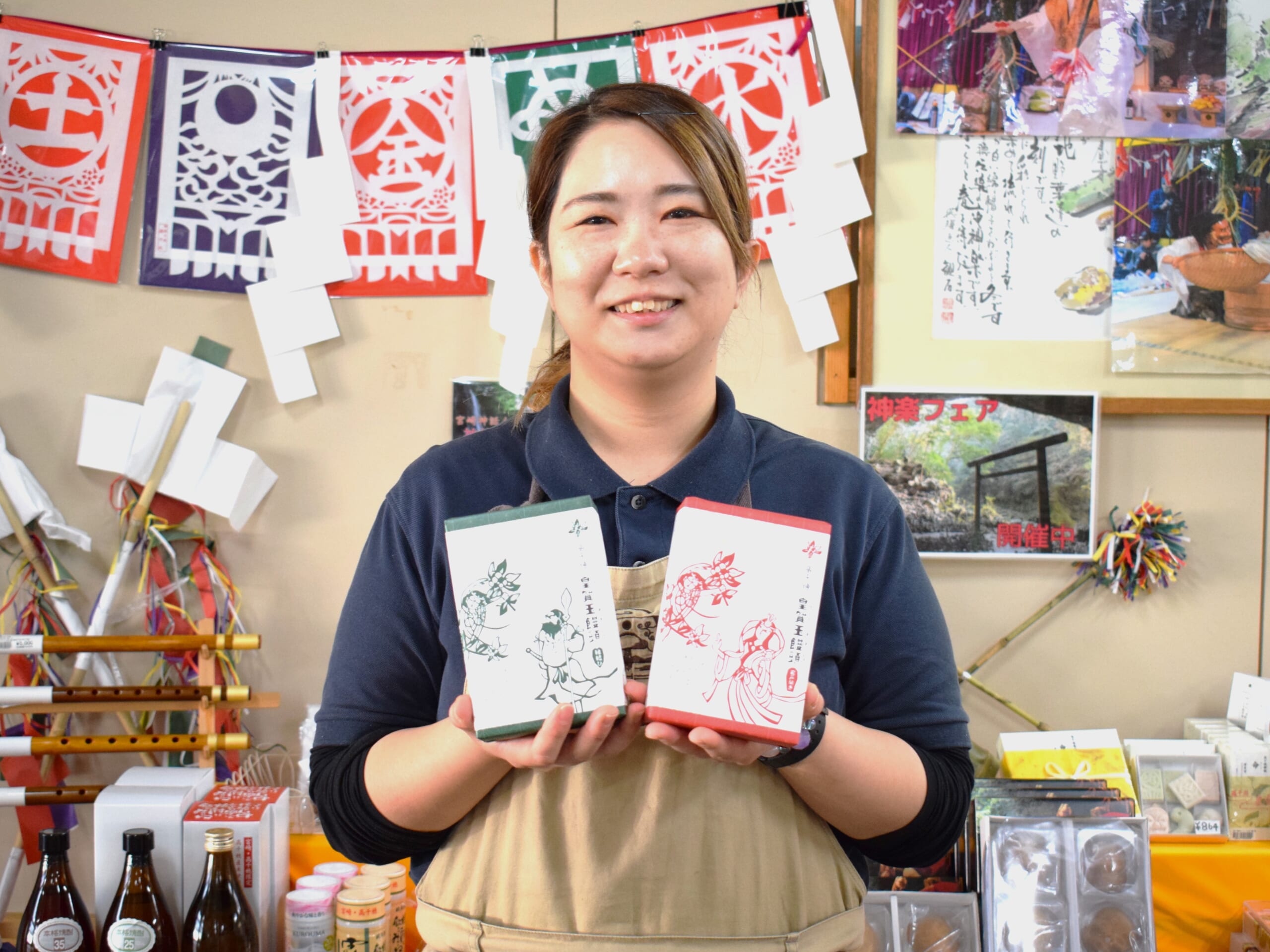

“When it comes to Kagura, you can`t go wrong with this!”, is what Minato said while introducing Ogatama manjuu (皇賀玉饅頭).
It is made with the image of the fruit from the Ogatama-no-ki, Magnolia compressa. In the legend Amanouzume-no-Mikoto held a branch from the tree in her hand when she danced in front of Ama-no-Iwato.

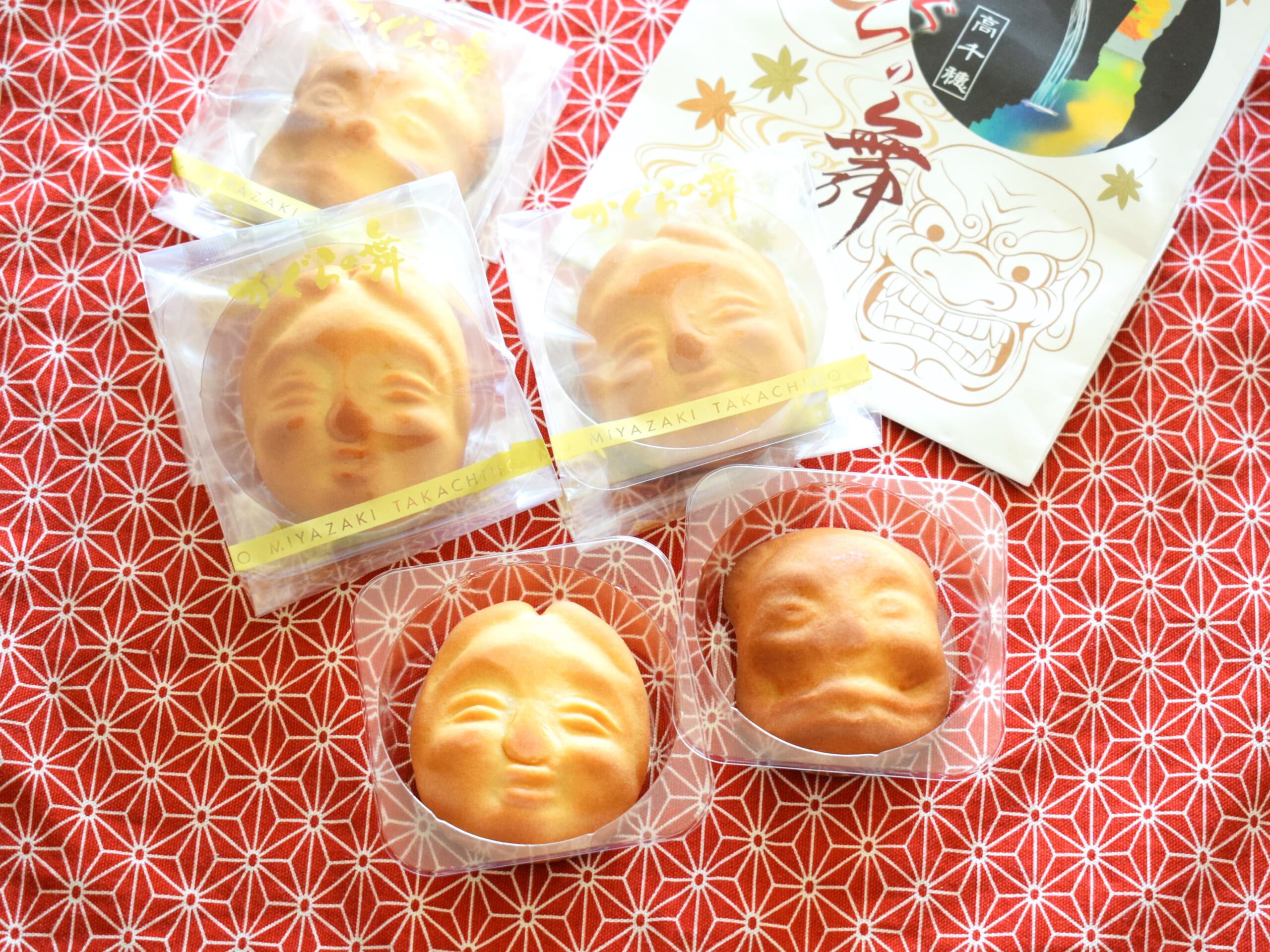
Finally, Minato introduced manjuus (buns) called Takachiho Kagura-no-Mai (高千穂かぐらの舞), the Takachiho kagura dance.
The manjuus are made in the motif of the masks used in kagura, and are individually packaged, making them a good souvenir to take to work!
Conclusion
Here we introduced you to the staff recommendations from the ‘Kagura Fair’ at the Takachiho Gamadase Market Kihachi-no-Kura.
The Kagura Fair will continue until mid-January 2024. Please watch a night kagura performance in Takachiho town and enjoy the lingering memories with souvenirs inspired by kagura♪.
 関連の記事
関連の記事
 コンシェルジュからのおすすめ
コンシェルジュからのおすすめ
お客様のご要望に沿ったおすすめの観光情報・宿(ホテル 旅館)・レストラン・居酒屋・カフェ・ショップ等をコンシェルジュスタッフが厳選してご紹介しております。





